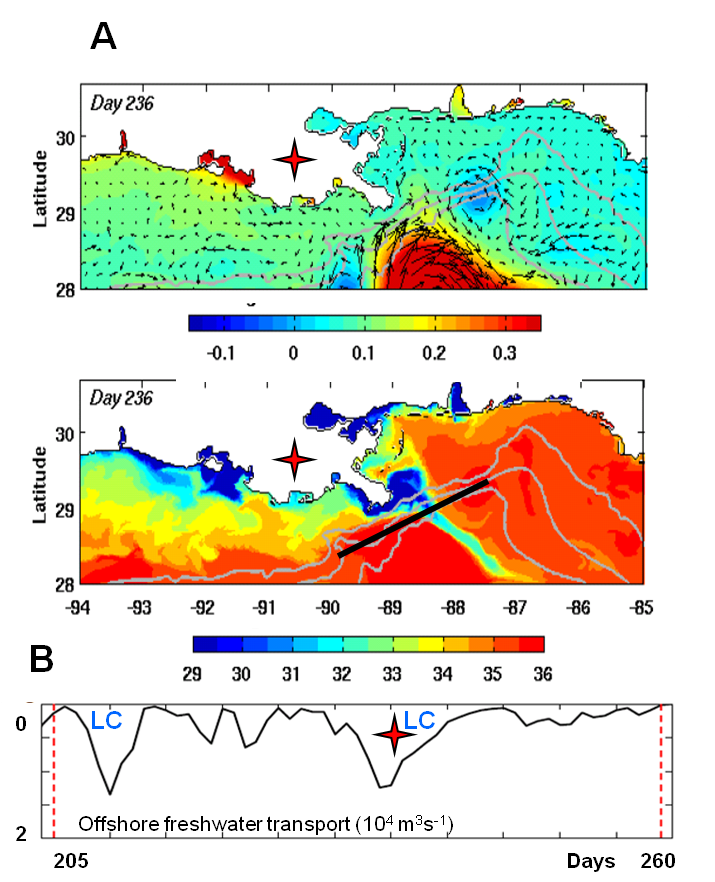DESCRIPTION:
(A)Snapshots of sea surface height and surface velocity vectors (upper) and sea surface salinity (lower) on model day 236 (August 23, 2004), showing the offshore removal of Mississippi River waters by the Loop Current System. The solid black line shows the section where the offshore transport of freshwater water was computed. (B)Offshore freshwater transport (104m3s-1) computed across the solid black line during the same period of time.
The offshore transport of Mississippi River plume waters is highly impacted by the offshore mesoscalecirculation of the NGoMregion, specially the LC System. Peaks of freshwater offshore transport occur when a LC eddy impinges against the shelf. From July 23, 2004 to September 16, 2004, the LC impacted the shelfbreakcirculation twice for 10 days, with peaks in the transport around 1.3 x 104m3s-1). After the passage of the LC, the transport drops to close to zero.
CONTACT:
Villy Kourafalou — vkourafalou@rsmas.miami.edu
Rafael Schiller — rschiller@rsmas.miami.edu




